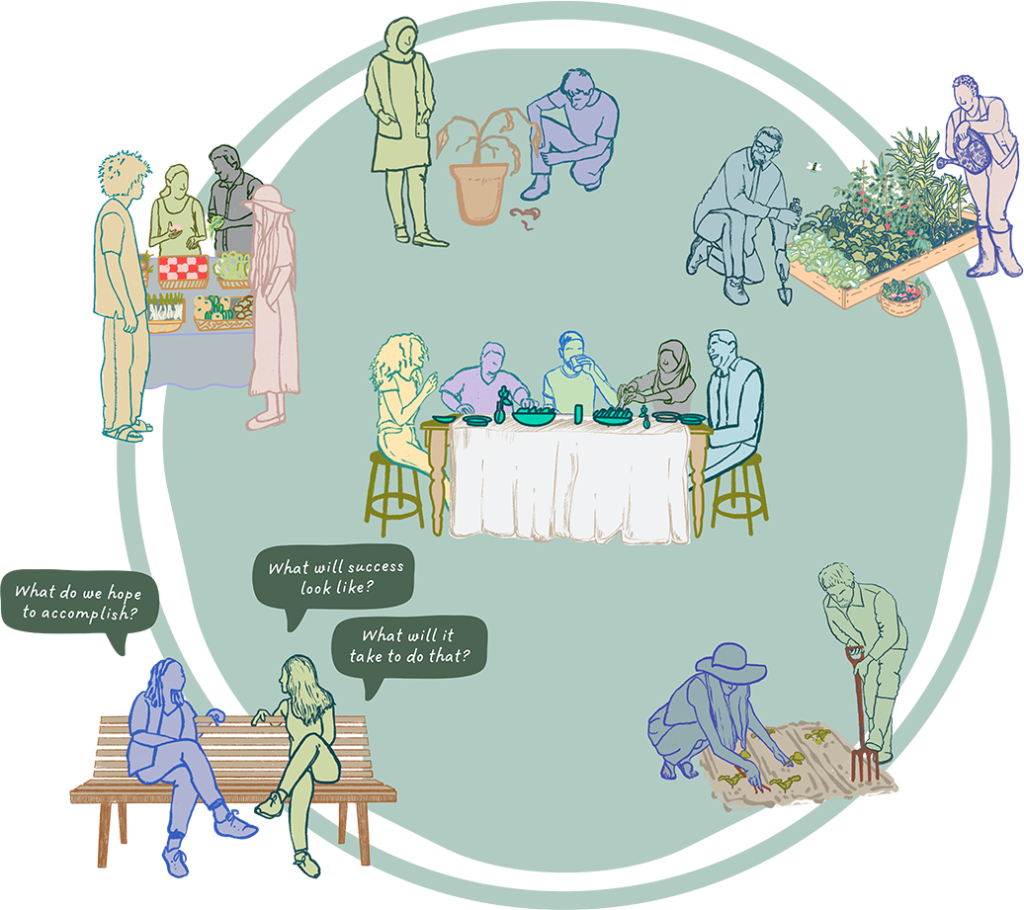Emergent Learning
Emergent Learning (EL) helps people across a system think, learn and adapt together in order to achieve important social change goals.
People often think of “learning” as a product to deliver or as a one-off event. Emergent Learning is a habit — a way of expanding our collective thinking in order to grow our ability to achieve the results we want.
Emergent Learning is about more than a pack of tools — it is about rethinking what it means to achieve complex goals in a complex world. EL focuses on discovering a shared line of sight that allows everyone to find their place in the endeavor; posing questions that invite a wider, more diverse, circle into the thinking process; making thinking visible to encourage a learning dialogue; deliberately testing hypotheses in the work itself; and sharing patterns and insights across a team, network, or community.
The very nature of Emergent Learning is emergent. No one person or organization can define — or has the right to impose — a solution for a whole system. It has to be a team sport. Emergent Learning is designed to support working together in a way that helps us achieve a whole that is greater than the sum of its parts.
Getting Started with Emergent Learning
What does Emergent Learning look like in practice? Imagine a couple of urban activists sitting on a bench next to a blighted empty space. What will it take to turn that space into an organic garden in which we can gather to enjoy community meals together? What do we know so far to get started? How will we learn from our experiments in gardening and hosting community meals? That’s a simple illustration of how EL practitioners are addressing issues of economic opportunity, racial equity, transportation, childhood literacy, and climate change at a local, national or international level.
Why We Need Emergent Learning
Whether the focus is on racial justice or economic opportunity or climate change, the social sector is feeling a growing sense of urgency to make more progress, in hugely dynamic environments where no assumptions are safe for long.
We work in environments that are both dynamic — making it hard to pinpoint a predictable strategy, and complex — meaning that we need the heads, hearts and hands of many other players outside of our scope of control to achieve our goals, and that, to get there, our goals need to be shared. Dynamic environments call for adaptive strategies. We need to recognize that “no plan survives first contact” and be ready to adjust it based on changing conditions. Complex environments call for strategies that are both adaptive and emergent. The difference between an adaptive strategy and an emergent strategy is like the difference between a chess game — where the chess pieces can be moved around to respond to an opponent, and a team sport — which relies on the real-time thinking and coordination of a whole team.
Emergent Learning supports both adaptive and emergent strategies. It helps us break through our assumptions and work habits so that we can think and learn together to achieve impact in these complex and dynamic environments.
“Emergent Learning is both incredibly simple, and incredibly powerful. It has helped us shape our thinking and learning in profound ways. Emergent Learning shows up in every facet of our organization – the way we think, talk, plan, evaluate, and learn. It’s transformed our organization in a way that helps us create more positive impacts on the communities we serve.”
A Brief Introduction to Emergent Learning
“Even when I get into the weeds of my project work, with Emergent Learning, I am able to lift my head up and look at the overall learning orientation of the group. What’s preventing them from having deep, meaningful learning conversations? Are they allowed to experiment or is there a culture of needing to be an ‘expert.’”
